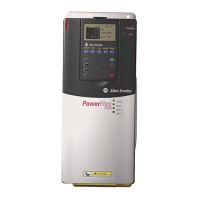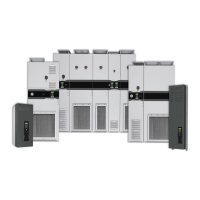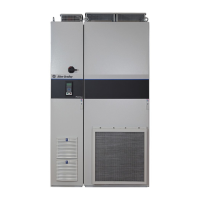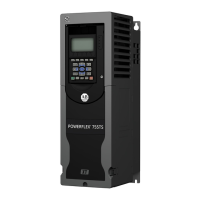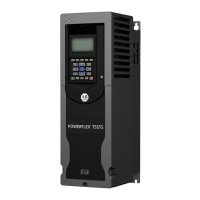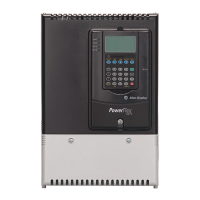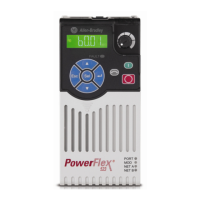Rockwell Automation Publication 750-RM100A-EN-P - August 2019 103
Application References Chapter 11
7. During the torque slew defined in Step 6, the drive is monitoring the
encoder counts. If the drive detects a delta (change) in encoder counts
greater than 9:63 [Brk Slip Thresh], the drive brings the torque back up to
the torque level that is defined in step 2
.
8. The PowerFlex 755T drive repeats Steps 6 and 7 until the drive no longer
sees a change in encoder counts that is greater than the threshold in 9:63
[Brk Slip Thresh].
9. If no brake slip is found, the drive turns off and sits stopped and ready, and
waits for the next run command. If a brake slip is found in Step 7, once the
drive lowers the load to the floor, the drive enunciates a 11012 ‘Brake
Slipped Stop’ alarm. The drive does not accept a run command again until
it is reset or power is cycled to the drive.
To add additional brake control capabilities to the PowerFlex 755T drive when
using an encoder, see Brake Proving Configuration
on page 104.
Configuration
You must configure the PowerFlex 755T drive before you access any TorqProve
parameters for configuration and commissioning. you can configure the drive
through Connected Components Workbench™ software or via parameter settings
in the HIM.
To configure the PowerFlex 755T drive via Connected Components Workbench
software, follow these steps.
1. Connect to the PowerFlex 755T drive through Connected Components
Workb ench sof t ware
2. Once connected, click ‘Device Definition’ on the Overview page.
3. Click ‘Dynamics Features’.
4. Under ‘Application Sel’ select Torque Prove. This adds Port 9 –
Application Torque Prove to the PowerFlex 755T drive.
5. To accept the changes, click Ok.
6. Power cycle the drive.
To configure the PowerFlex 755T drive via the HIM, follow these steps.
1. Navigate to 0:70 [Application Mode].
2. Click the ‘edit’ soft key and change 0:70 [Application Mode] = 2 ‘Torque
Prove’
3. To accept changes, click the ‘enter’ soft key.
4. Power cycle the drive.

